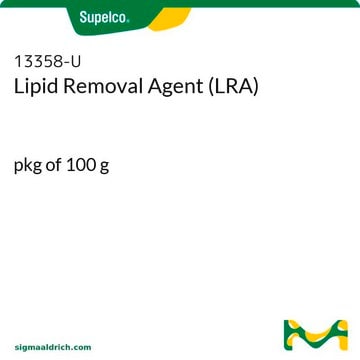13360-U
Lipid Removal Agent (LRA)
pkg of 500 g
Sinónimos:
polymeric adsorbent, XAD-2
Seleccione un Tamaño
Seleccione un Tamaño
About This Item
Productos recomendados
grado
reagent grade
Formulario
powder
envase
pkg of 500 g
técnicas
LPLC: suitable
superficie
120 m2/g
Matriz
Silica
grupo activo de la matriz
silica
tamaño de partícula
325 mesh
tamaño de poro
90 Å mean pore size
Descripción general
Código de clase de almacenamiento
11 - Combustible Solids
Clase de riesgo para el agua (WGK)
WGK 1
Punto de inflamabilidad (°F)
Not applicable
Punto de inflamabilidad (°C)
Not applicable
Equipo de protección personal
dust mask type N95 (US), Eyeshields, Gloves
Elija entre una de las versiones más recientes:
¿Ya tiene este producto?
Encuentre la documentación para los productos que ha comprado recientemente en la Biblioteca de documentos.
Los clientes también vieron
Active Filters
Nuestro equipo de científicos tiene experiencia en todas las áreas de investigación: Ciencias de la vida, Ciencia de los materiales, Síntesis química, Cromatografía, Analítica y muchas otras.
Póngase en contacto con el Servicio técnico







